NTN supplies sliding bearings and machine parts made from plastic, sintered metal, and magnetic material. We call products made from plastic material as “BEAREE,” sintered metal as “BEARPHITE,” and magnetic material as “NIKAMET.” Leveraging NTN's core competencies in tribology and precision machining technique, we have been providing products that are optimally engineered to meet every need of growing markets for more than half a century.
About Sliding Bearing
While rolling bearings are composed of outer ring, inner ring, and rolling elements (balls or rollers) placed between them, sliding bearings have a simple ring shape that does not use rolling elements. They are used as bearings by utilizing self-lubricating of the material and interposing oil or lubricant on the sliding surface where they contact with the shaft.
Generally, sliding bearings are compact and excellent in quietness compared with rolling bearings because it does not use rolling elements. NTN develops, manufactures, and sells sliding bearings made from plastics and sintered metals.

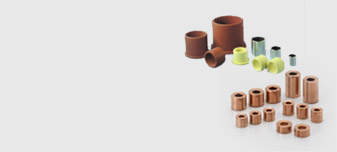 Slidingbearing |
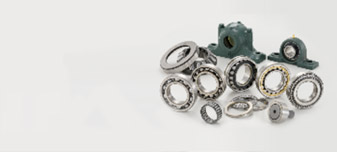 Rollingbearing |
|
|---|---|---|
| Structure |  The load is supported on the surface without using rolling elements. |
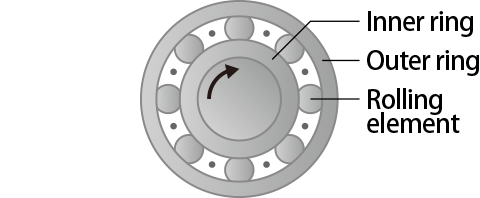 Rolling elements are interposed between the inner ring and outer ring, and support the rotational load. |
| Dimension | The cross-sectional area is small. | The cross-sectional area is large, since rolling elements are interposed. |
| Friction | High friction torque is generated at startup. During rotation, friction becomes low depending on conditions. | Friction torque is low at startup and during rotation. |
| Internal clearance and rigidity | Use with operating clearance. | Internal clearance can be negative to provide rigidity. |
| Lubrication | Some types can be used lubrication-free, and they are generally relatively insensitive to dust. Sufficient attention should be paid to the oil lubrication condition. | In principle, lubricants are needed. Maintenance can be conducted easily by using grease and other lubricants. They are sensitive dust. |
| Temperature | Generally, there are limitations of high and low temperature. |
They can be used from high and low temperatures. Cooling effect can be expected by lubricants. |
Material Technology to Control Friction and Wear Properties
By compounding special filler into engineering plastic and sintered material to develop original material with extremely controlled friction and wear properties, we propose the best products according to usage situations.
Excellent Environmental Performance

- Can be manufactured while saving resources : BEAREE (plastic material) and BEARPHITE (sintered metal) can be manufactured without wasteful material at a material yield of 100%. NIKAMET (magnetic material) enables products to be made smaller and use fewer resources through the use of high magnetic material.
- Saving energy during manufacturing : BEARPHITE (sintered metal) is sintered at a low temperature, so it consumes less electricity during manufacturing compared to common metal products.
- Saving energy during use : NIKAMET (magnetic material) offers a lineup of low heat-generating material with excellent electricity efficiency.
Lead Growth Market for More than Half a Century
NTN formed a business alliance with U.S. company in 1965 and began manufacturing and sales of plastic products. In 1966, we formed a technical alliance with a U.K. company for oil-impregnated sintered bearings, and in 2012 we made Nippon Kagaku Yakin CO., LTD. (founded in 1947, the present Kameyama Works, NTN Advanced Materials Corp.) a wholly owned subsidiary, which has excellent technologies and results in field of magnetic material. With reliable material technology cultivated over many years, our products have been adopted in a wide range of fields including automobiles.


| Year | Event |
|---|---|
| 1965 | Entered a business alliance with Dixon Corp. of the U.S. and established Toyo Bearing Rulon Co., Ltd. in Kuwana City, Mie Pref. through merger (the present Engineering Plastic Works, NTN Corp.) Began manufacturing and sales of plastic products |
| 1966 | Established Toyo Bearing Powder Metal Co., Ltd. in Ama-gun, Aichi Pref. (the present Kanie Works, NTN Advanced Materials Corp.) Began manufacturing and sales of oil-impregnated sintered bearings |
| 2012 | Made Nippon Kagaku Yakin Co., Ltd. (the present Kameyama Works, NTN Advanced Materials Corp.) which had excellent technologies and results in field of magnetic material a wholly owned subsidiary of NTN Corp. |
Product Lineup
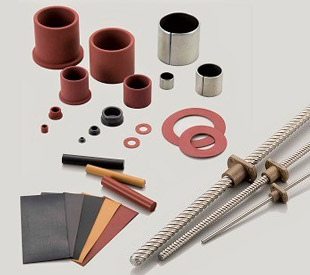
BEAREE (plastic material)
Lubrication-free for rotational and sliding parts
For usage situations requiring quietness, corrosion resistance, and non-magnetism
- <Main products>
-
- ・Sliding bearing
- ・Sliding seal
- ・Sheet material/rod material/pipe material
- ・Sliding screw
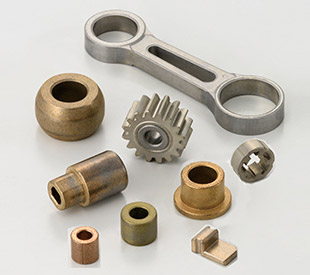
BEARPHITE (sintered metal)
Realize smooth rotation and long-term maintenance-free operation in various applications
Extensive lineup of standard products without need for mold fabrication
- <Main products>
-
- ・Oil-impregnated sintered bearing (sliding bearing)
- ・Mini pillow unit
- ・Sintered machine part
- ・Hydrodynamic bearing (Hydrodynamic BEARPHITE)
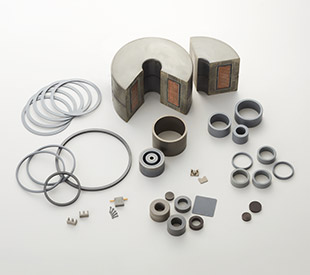
NIKAMET (magnetic material)
Magnetic material by injection molding or compression molding
More efficient manufacturing by mold forming compared to cutting or grinding
- <Main products>
-
- ・Hard magnetic material (magnet for sensor/magnet for motor)
- ・Soft magnetic material (Magnetic core for induction hardening/choke coil)
Flow of Custom-made
Step1
Confirm usage situations and environment
Bearing position, mating material, load, velocity, temperature, lubrication, flame resistance, allowable space, fitting, required characteristics, etc.
Step2
Select and develop material
Step3
Design shape
Step4
Propose drawing
Finish
Delivery prototype (sample)
(Deliver at the shortest three weeks* from the completion of Step 4)
*The delivery period varies depending on the content.

